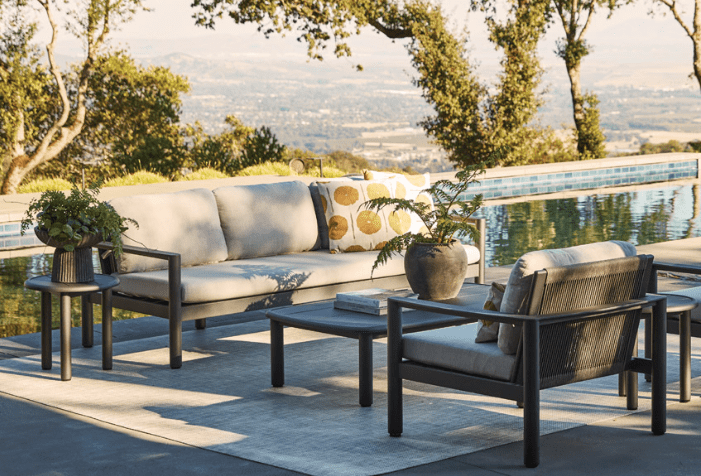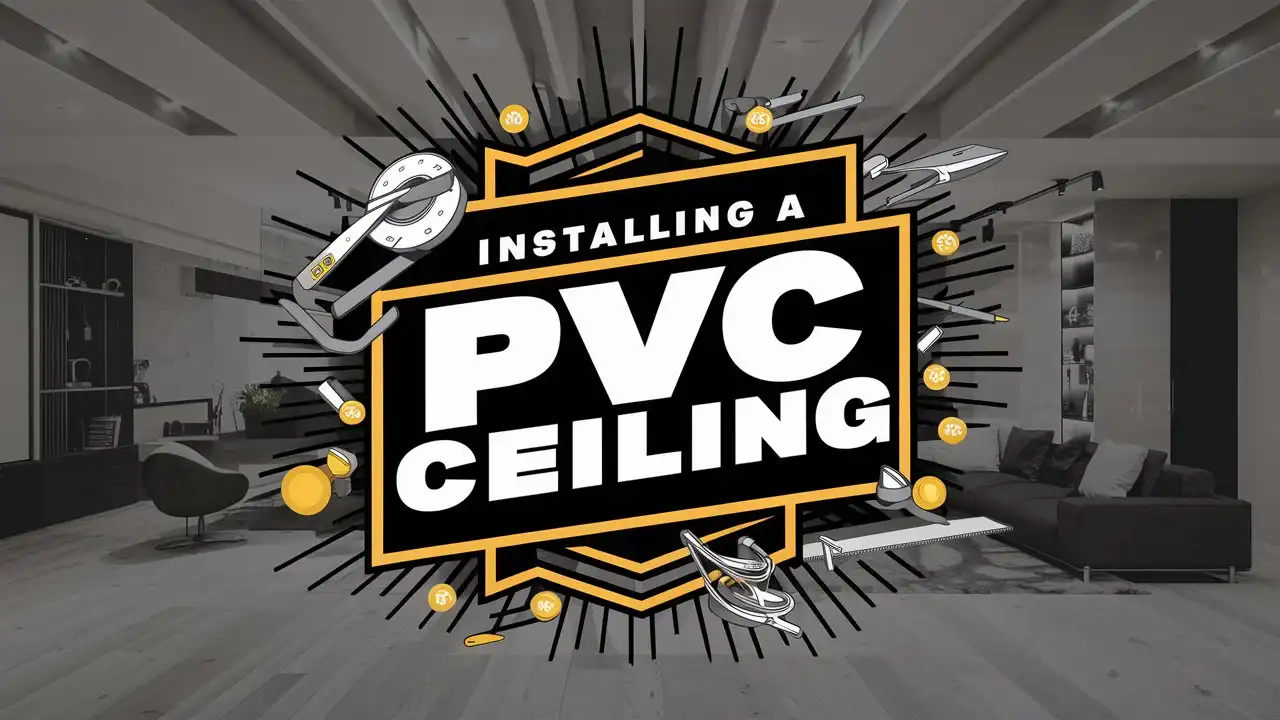Split-level homes have long been common in American neighborhoods, particularly those built from the 1950s to the 1970s. With their staggered floor plans and distinct multi-level layouts, these homes were once lauded for their practicality and efficient use of space. Today, many still appreciate their character, but the exterior designs that once felt fresh and modern now frequently appear dated in comparison to contemporary homes.
This is where an exterior remodel comes in. By updating siding, windows, entryways, and landscaping, homeowners can revitalize their split-level homes and achieve a modern aesthetic that is both current and timeless. With the right design vision and the help of professional remodelers like Slate Design & Remodel, these homes can be transformed into stunning showcases that will stand out on any street. Exploring why remodels matter is the first step towards unlocking their full curb appeal potential.
Why Remodel a Split Level Exterior?
The exterior of a home determines how it is perceived, not only by guests but also by potential buyers. Split-level homes with dated architectural details, such as narrow windows, muted siding colors, or old brick facades, can feel stuck in the past. Remodeling the exterior provides an opportunity to modernize the look while emphasizing the unique staggered design that makes these homes so distinctive.
Exterior remodels add significant value in addition to their aesthetic appeal. In markets like Northern Virginia, where curb appeal has a direct impact on resale potential, updating the exterior of a split-level home can increase property value and appeal to a broader range of buyers. Even for those who don’t plan to sell soon, improvements like energy-efficient windows or updated siding lower utility costs and increase durability, making the investment worthwhile.
Most importantly, a remodel allows homeowners to make their home feel uniquely theirs. Remodelers such as Slate Design & Remodel help to transform dated exteriors into fresh, inviting spaces that better reflect today’s lifestyles by combining modern materials with the charm of the original architecture. From here, it becomes crucial to examine the key elements that drive these transformations.
Key Elements of a Split-Level Exterior Remodel
Transforming the exterior of a split-level home is more than just one upgrade; it’s about combining several design elements that bring balance, harmony, and a modern edge. Because these homes already have distinct architectural layouts, each element must complement the others to prevent a disjointed appearance. The following are the most important factors that homeowners should consider.
Siding Updates
Old siding, whether faded vinyl or weathered wood, can quickly age a house. Upgrade to modern materials like fiber cement, composite siding, or even mixed textures like stone and wood to add depth and sophistication. Fresh color palettes, such as warm neutrals or bold contrasts, also emphasize the home’s architectural lines, making its staggered structure feel intentional rather than outdated.
Roofing enhancements
The roof is one of the most visible features of a split-level exterior, and an outdated or mismatched roof can detract from the overall appearance. Installing architectural shingles, metal roofing, or even a low-maintenance synthetic material improves curb appeal while also increasing energy efficiency and durability.
Windows & Doors
Split-level homes frequently have smaller, narrower windows, which can make the façade appear closed off. Enlarging window frames or installing modern black-trimmed windows brings natural light into the home while also giving it a sleek, contemporary appearance. Similarly, replacing a plain front door with a bold, modern design, such as one with glass panels or contrasting colors, immediately elevates the entryway.
Entryways and porches
Because split-level homes lack a grand front entrance, remodeling the entryway can significantly alter first impressions. Adding a covered porch, statement lighting, or a walkway lined with landscaping creates a welcoming atmosphere while balancing the home’s asymmetry.
Garage Doors
Many split-level homes have garages facing the street, which makes the garage door a prominent visual element. Modern carriage-style or sleek, minimalist doors can transform what was previously an afterthought into a standout feature that complements the overall design.
Landscape and Hardscaping
The final touch is often found in the surrounding landscape. Updated pathways, retaining walls, and minimalist plant designs all help to soften a split-level home’s boxy structure. Together with modern hardscaping, these elements beautifully frame the remodel, resulting in a polished, finished exterior.
All of these elements, when combined thoughtfully, result in a cohesive design rather than a patchwork of upgrades. The next step is to explore modern design trends that are particularly suitable for split-level exteriors.
Modern Design Trends for Split-Level Homes
Updating a split-level home entails balancing classic architectural lines with contemporary style. Clean lines, minimalist details, and harmonious proportions are central to modern design trends. These trends make the home feel fresh and current while retaining the distinct character that defines the split-level style.
Neutral and Contrasting Color Palettes
Neutral tones such as charcoal, soft gray, or creamy whites are increasingly popular for siding, especially when paired with contrasting trim or accent panels. This adds depth and visual interest while still maintaining a modern, timeless appearance.
Mixed materials.
Combining materials like stone, wood, and fiber cement creates texture and sophistication. For example, a stone veneer on the lower level combined with smooth siding above emphasizes the staggered design while giving the home a more modern appearance.
Large, sleek windows.
Modern remodels favor large or floor-to-ceiling windows, sometimes with black or dark trim, to maximize natural light and create a striking contrast against neutral siding. Windows are no longer just functional, they are design statements that immediately modernize the exterior.
Statement Entryways
Bold doors, angular porches, or even cantilevered awnings make the entrance stand out. Modern entryways frequently use glass, metal accents, or wood tones to complement the overall aesthetic.
These design trends not only improve curb appeal, but they also pave the way for structural changes that improve both aesthetics and functionality. By combining style and strategic changes, homeowners can completely modernize their split-level exterior without compromising its identity.
Next, it’s important to consider structural updates that can further enhance a home’s exterior transformation.
Structural Updates That Transform Curb Appeal
While aesthetics and materials are important in modernizing a split-level home, structural changes can have a significant impact on how the house appears from the outside. Thoughtful changes to the home’s silhouette and layout can improve balance, functionality, and overall presence.
Roofline redesigns
Updating the roofline instantly modernizes a split-level home. Adding a sleeker, lower-profile roof or incorporating multiple roof planes helps break up boxy appearances and emphasize clean, modern lines.
Porches and Entry Improvements
Many split-level homes feature understated or recessed entryways. Extending or adding a covered porch makes a welcoming focal point. Modern railings, lighting, and stairs can add to the space’s fresh, inviting appearance.
Decks, balconies, and outdoor living spaces
Adding or expanding decks and balconies not only increases usable outdoor space but also adds depth and interest to the exterior. These additions can be combined with minimalist railings or integrated planters to reinforce a modern aesthetic.
Garage Extensions and Updates
The garage frequently dominates the exterior of split-level homes. Updating its structure, whether by resizing, installing a modern door, or integrating it with the home’s entryway, greatly improves curb appeal and creates a cohesive exterior.
Structural upgrades, when combined with modern materials, result in a home that is both stylish and functional. With this in mind, the next step is to choose materials that enhance durability, beauty, and contemporary appeal.
Modern Material Choices That Make a Difference
Choosing the right materials is crucial for creating a modern, durable, and visually appealing split-level exterior. Materials not only define a home’s appearance but also its maintenance, longevity, and energy efficiency.
Siding Options
Fiber cement siding has become a popular choice for modern remodels due to its durability, low maintenance requirements, and design versatility. Engineered wood and composite siding provide warmth and texture while being more weather-resistant than traditional wood. Combining multiple siding materials, such as smooth panels with stone or wood accents, can add depth and highlight the home’s architectural features.
Roofing Materials
High-quality shingles, metal roofing, or synthetic tiles offer both visual appeal and long-term durability. Modern roofing materials are often available in sleek finishes and neutral colors that complement contemporary siding and trim options.
Windows & Doors
Energy-efficient windows and insulated doors improve both comfort and curb appeal. Aluminum, fiberglass, or wood-clad frames, combined with modern glass designs, provide a clean, upscale appearance to the home while improving energy performance.
Hardscaping and Accents
In addition to structural materials, using natural stone, pavers, or modern concrete for pathways, driveways, and retaining walls gives the exterior a polished look. These elements promote harmony between the home and its surroundings.
Choosing high-quality materials naturally leads to the following consideration: choosing the right color palettes to tie the modern exterior together.
Color Palettes That Modernize Split-Level Homes
Color has the power to completely transform a split-level home, emphasizing architectural lines and creating a modern, cohesive feel. Modern remodels frequently use neutral tones such as soft grays, charcoal, beige, or crisp whites to provide a clean, timeless backdrop for other design elements.
Accent Colors and Contrasts
Contrasting trim, doors, or shutters can highlight the home’s key features. A dark front door against light siding, or black window frames with neutral tones, adds depth and sophistication. Natural wood stains or stone accents add warmth while balancing the minimalist modern aesthetic.
Layering for Visual Interest
Layering different shades within the same color family, such as lighter siding with darker accents, helps to break up the boxy appearance of split-level homes. This subtle variation draws attention to architectural details without overwhelming the overall design.
Strategic color selection complements exterior lighting, which not only improves curb appeal at night but also highlights textures, materials, and architectural features. Proper lighting transforms the home’s exterior into a cohesive, welcoming environment.
The Role of Exterior Lighting in Modern Makeover
Exterior lighting is an important part of modernizing a split-level home. It emphasizes architectural features, increases safety, and creates ambiance, making the home feel welcoming day and night.
Entryway Lighting
Statement lighting at the front door, such as sleek wall sconces or a modern pendant, highlights the entry while also providing practical illumination. It sets the tone for the house’s exterior style and adds a touch of sophistication.
Landscape and Pathway Lighting
Subtle lighting along walkways, driveways, and garden beds not only ensures visitor safety but also highlights landscaping and hardscaping elements. Low-voltage LED lighting or recessed fixtures can provide a warm, contemporary glow without overpowering the design.
Architectural Uplighting
Uplighting or spotlights can draw attention to key features like textured siding, stone accents, or distinctive rooflines. This adds depth and dimension to the façade, especially during the evening hours, and complements the home’s modern aesthetic.
Effective exterior lighting naturally complements landscaping and hardscaping, resulting in a cohesive, visually appealing outdoor space. Properly designed outdoor spaces frame the home and increase the impact of a remodel.
Landscaping and Hardscaping to Complement a Remodel
A modern split-level exterior is incomplete without thoughtful landscaping and hardscaping. These elements not only frame the home, but they also improve its curb appeal, functionality, and overall appearance.
Modern walkways and patios
Replace dated concrete or worn paths with pavers, natural stone, or contemporary concrete designs to add structure and style. Patios and small seating areas can also be combined to create outdoor living spaces that complement the home’s modern exterior.
Minimalistic Landscaping
Modern landscaping emphasizes clean lines, low-maintenance plants, and native species that thrive in the local climate. Simple garden beds with strategically placed shrubs or ornamental grasses provide a clean, uncluttered appearance while adding texture and color.
Retaining Walls and Hardscape Accents
Retaining walls, raised planters, and other hardscape features can help to define outdoor spaces, create balance, and highlight architectural elements. The use of natural stone or composite materials ensures durability and aligns with the modern design theme.
These exterior improvements, while visually appealing, also increase the home’s value and functionality. Naturally, homeowners frequently want to understand the cost implications of these extensive exterior remodels before moving forward.
Cost Considerations for Split-Level Exterior Remodels
Remodeling the exterior of a split-level home is a significant investment, with costs varying greatly depending on the home’s size, materials used, and design complexity. Common costs include siding replacement, roofing updates, window and door upgrades, exterior lighting, and landscaping. Homeowners should budget for labor, permits, and any unexpected structural repairs that may occur during the remodel.
High-quality materials and expert craftsmanship frequently have a higher initial cost, but they provide durability, energy efficiency, and long-term value. Fiber cement siding or custom stone accents, for example, may be more costly at first than traditional vinyl siding, but they will last for decades. Working with professional remodelers like Slate Design & Remodel ensures accurate estimates and transparent budgeting, allowing homeowners to maximize the value of their investment while avoiding surprises.
After determining the costs, the next step is to see real-world transformations that show how strategic upgrades can dramatically modernize split-level exteriors and inspire homeowners.
Before-and-After Transformations
There’s nothing more inspiring than watching a split-level home transform from dated to modern with a thoughtful exterior renovation. Before-and-after images demonstrate the dramatic impact that carefully selected materials, color palettes, and structural updates can have.
For example, a home with faded siding, small windows, and an outdated roofline can be transformed with fiber cement siding, larger modern windows, and a sleek, updated roof. A covered porch or bold front door immediately changes the home’s focal point, while minimalist landscaping and hardscaping complete the polished look.
These transformations demonstrate that even minor changes, such as replacing the front door, updating the lighting, or improving the landscaping, can have a significant visual impact. Homeowners seeking similar results should prioritize working with skilled remodelers who understand the complexities of split-level architecture. This leads us to the importance of selecting the right remodeler for a split-level exterior.
Choosing the Right Remodeler for a Split Level Exterior
Choosing the right remodeler is critical to completing a successful transformation. Split-level homes present unique architectural challenges, and inexperienced contractors may miss critical details that affect both aesthetics and functionality. Homeowners should look for remodelers with a strong portfolio of completed split-level projects, demonstrating their ability to blend modern updates with the home’s original character.
Licensing, insurance, client testimonials, and a proven track record of completing projects on time and within budget are all important considerations. To ensure alignment, the consultation should include a discussion of the design vision, materials, and project timelines. Slate Design & Remodel stands out for their ability to modernize split-level exteriors while maintaining structural integrity and increasing curb appeal.
With the right remodeler, homeowners can feel confident about making updates that improve aesthetics and also increase property value. This brings us to the final point: why investing in a split-level exterior remodel is worthwhile.
A Fresh Perspective on Split-Level Living
Remodeling the exterior of a split-level home offers more than just aesthetic appeal; it allows you to reimagine the home’s presence and functionality. Modern makeovers allow homeowners to keep the structure’s original charm while incorporating current design trends, long-lasting materials, and energy-efficient upgrades.
Investing in a well-planned exterior remodel has long-term benefits, including increased curb appeal, higher property value, lower maintenance costs, and greater pride of ownership. Working with experienced professionals like Slate Design & Remodel ensures that every element, from structural updates to landscaping and lighting, works together to create a seamless, stunning exterior. Finally, a split-level remodel is not just about updating a home; it’s about creating a modern, inviting space that feels intentional, stylish, and uniquely yours.








